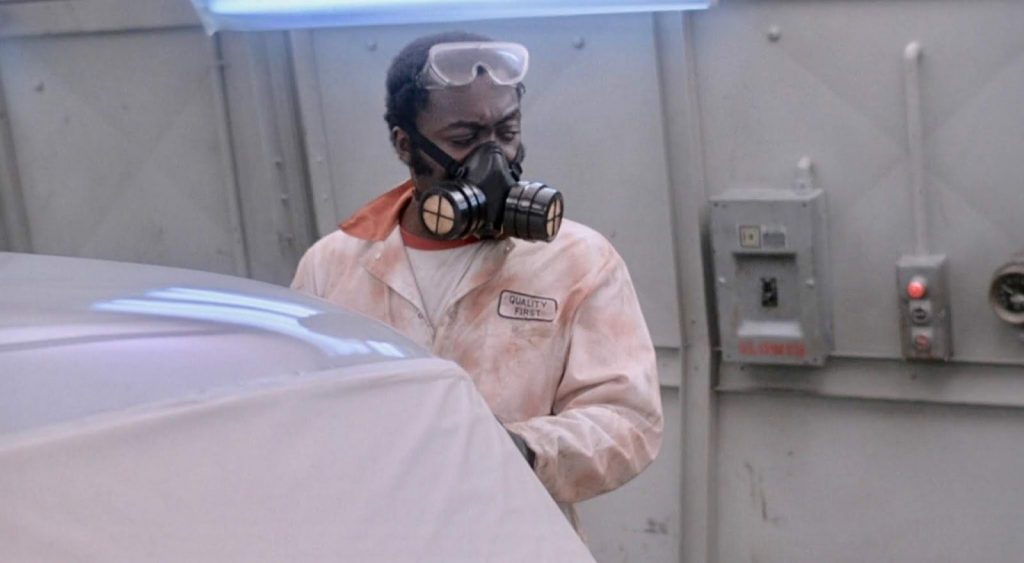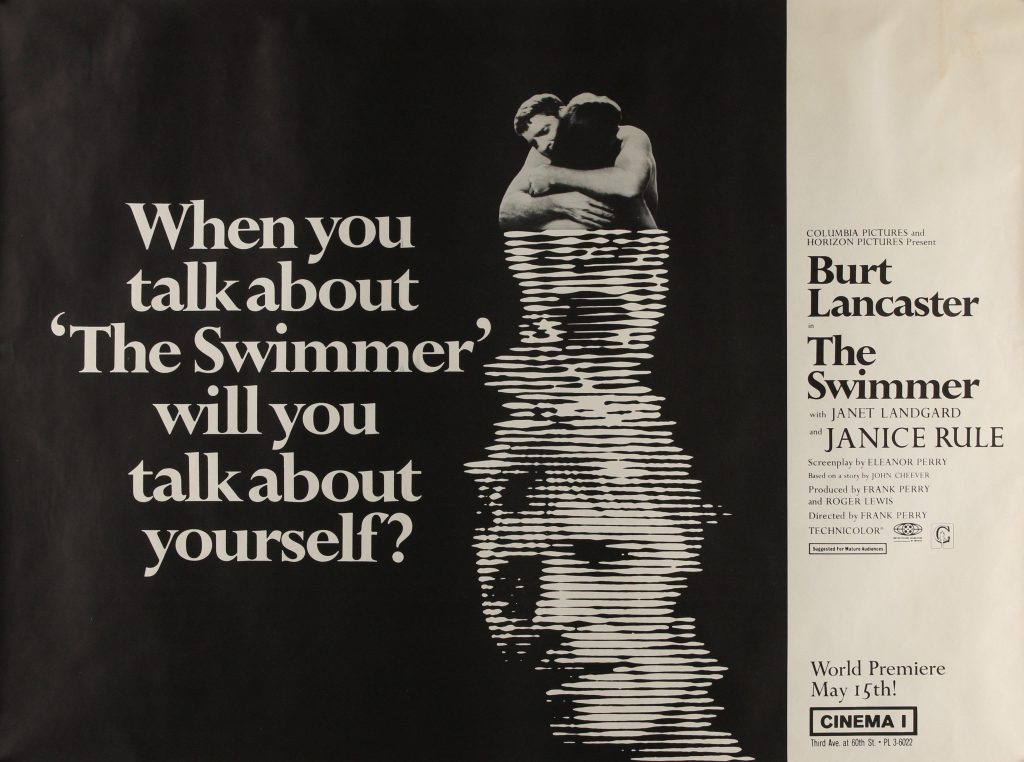There’s nothing an actor loves more than a good death scene. Most would kill for one great one. Yaphet Kotto, one of the finest character actors America ever produced, got two.
Kotto—who passed away last month at the age of 82—is not as widely synonymous with onscreen death as the likes of Danny Trejo or Sean Bean, even though he memorably bought it in several of his best-known roles (Alien, Live and Let Die, the television series Homicide: Life on the Street). But his death scenes in two lesser-seen works from the 1970s—the hardboiled blaxploitation classic Truck Turner (1974) and the gritty union crime-drama Blue Collar (1979)—stand him as one of the all-time top film decedents. More than just memorable set-pieces, those two scenes also reveal just what it was that made Kotto such a brilliant actor and unforgettable screen presence.
The first of these, Truck Turner, came about at a key time in Kotto’s career. After honing his craft on the stage and bit parts in movies and TV, he began landing bigger and bigger roles, culminating with lead performances in the 1972 grindhouse satire Bone and police dramas Across 110th Street and The Limit (his sole directing credit). A year later, he played the heavy in the eighth James Bond film, Live and Let Die (1973).
The next year, American International Pictures reached out to him to play the main villain in a script to be directed by Jonathan Kaplan titled Truck Turner, about an ex-football player turned bounty hunter. Originally intended as a starring vehicle for the likes of aging tough guys Robert Mitchum or Lee Marvin, it was recalibrated in order to take advantage of the “urban picture” trend and serve as a starring vehicle for Isaac Hayes (who helped set said trend with his iconic score to Shaft, and wanted to get into acting).
Never one to hold back his opinions (be they of the movies he made, politics, or his belief in extraterrestrial life), Kotto claimed only to have accepted the role of Harvard Blue—a suave, calculating criminal attempting to cash in on a bounty put out on the title character in order to extend his power within the pimp trade—because he was going through an expensive divorce at the time. Regardless of his feelings about the film or his role, he put his all into it, turning what could be a stock villain into an unforgettable bastard of the highest order. (His introduction—one of the great cinematic memento moris—sees him interrupt the funeral of a rival pimp in order to hawk a loogie into the open casket.)

By the time he’s engaging in a gun battle with Hayes’s heroic skip tracer in the middle of a crowded hospital ward (the amount of innocent bystanders that get blown away and his use of a little kid as a human shield make it clear that this scene was a huge influence on the iconic climactic shootout of John Woo’s Hard Boiled) we’re rearing to see him get his just deserts. They’re served soon enough: after catching a bullet in the leg, Blue stumbles out the back of the hospital, attempting to make a getaway in his Lincoln town car. But he only makes it a few steps before Turner raises up his Magnum .44, aims it at his spine, and fires.
Up to this point, Truck Turner has been pretty meat-and-potatoes in terms of style. This all makes for a perfectly entertaining, two-fisted action-crime-thriller, but not a particularly emotionally impactful one. But the second the bullet explodes into Kotto’s back, we are suddenly transported into a very different film.
It’s as if time slows down—Kotto freezes in a twisted spasm, then takes a few more broken-footed steps until he collapses on the short concrete steps that lead to the sidewalk. There, he rests for a few moments, mouth agape, tongue protruding, eyes struggling to keep from rolling back in his head. Somehow, he musters the strength to stand back up and begins to slowly make his way over to his car, all while his killer stalks him silently like a slasher movie villain (Hayes was never a particularly convincing actor, but the mask of mercilessness he wears in this scene makes him briefly terrifying).
The score has completely dropped off, so that for the rest of the scene all we hear is Blue’s rattled breathing and the faint howling of a ghostly wind, as the camera suddenly moves directly under his face, swinging from side-to-side to match the lolling of Kotto’s head on his neck. Against the eerily beautiful backdrop of a hazy California sunset, we watch as Kotto’s eyes pop with a mix of fear and stubborn refusal to accept his status as a walking dead man. We cut a couple times to his character’s swirling, blurry POV, until he finally makes it to the driver’s side door, opens it, and slowly eases himself into the seat. There, he coughs up a thick spurt of blood, before, eyes still open, his head falls directly onto the steering wheel, the blaring of the car’s horn announcing his death.
What is the viewer to make of this scene? Where did it even come from? It partially plays like an homage to the bombastic blaze-of-glory ends met by the anti-heroes of the old ‘30s Warner Brother gangster movies (White Heat, Little Caesar, Scarface). At the same time, it carries the ethereal beauty and transcendental power of something out of a Same Peckinpah or even Werner Herzog film (while also anticipating the formalist power moves that we will later find in the work of Spike Lee and Gaspar Noe). The grindhouse has been invaded by the arthouse, and even though there are more shocking moments throughout Truck Turner—in the very next scene Hayes blows away a madame played by Star Trek’s Nichelle Nichols—it’s this scene that will linger long after the movie ends.
The scene is very much the opposite of Kotto’s grand exit in Paul Schrader’s directorial debut of four years later, Blue Collar, in which he starred alongside Richard Pryor (in his first dramatic role) and Harvey Keitel as struggling Detroit auto workers who find themselves mixed up in their union’s criminal dealings. Pryor is the obvious standout, thanks to a ferocious turn that twists and darkens his famous comic persona, while Keitel low-key gives one of his best performances. But it’s Kotto as ex-con bruiser and suave ladies’ man Smokey who proves the heart and soul of the film. Behind his hulking physique and willey criminal intelligence lies a deep moral conscience and code of honor. It’s these qualities that target him for execution by the union once they decide they can’t buy him out or scare him off.

Whereas the artfulness of Kotto’s demise in Truck Turner comes out of nowhere, his murder in Blue Collar is built with the steady precision of a Hitchcock set-piece. As soon as Smokey is given the order to fix a car in one of the factory’s paint rooms, we know what’s about to go down, even if we don’t know exactly how. Schrader expertly stacks the pieces: Kotto puts on a white painter’s suit and mask and walks into the small box of a room where a car sits. He closes the door behind him and starts looking things over, oblivious to the fact that another factory worker—whose face we never see—has parked a forklift in front of the door, barring any exit.
It’s at this point that the scene moves from one of ratcheting dread to full-on horror, as the room suddenly comes alive. The nozzles that hang from the ceiling turn on automatically, coating the car with a never-ending stream of dark blue paint. At first, Kotto is merely annoyed by what he thinks is faulty machinery, but once he realizes that he can’t manually shut them down, he knows something is truly wrong. His fears are confirmed when he tries the door, only to find it won’t open.
He calls out for help, but he can’t take his mask off, lest he choke on the paint fumes, which have begun to fill the entire air like a swarm of locusts. He bangs against the sides of the box, but the sounds can’t be heard by his fellow coworkers (any of whom might be in on the plot anyway) over the usual din of the factory. He tries to kick down the walls, but his hands and feet slide off them, leaving behind trails that resemble streaks of blue blood. He takes off his mask—now useless—and Schrader keeps the camera close to his sweat and saliva-slick face as he stumbles through the blue mist (how this effect was achieved without making Kotto seriously ill, I have no idea).
Like Truck Turner, the scene is scored, at least at first, to purely diegetic sound: Kotto’s gasping and gagging play over the buzz and hum of the machinery surrounding him. As the scene draws to its close—Kotto’s character makes a last-ditch attempt to save himself by smashing through the small glass windowpane cut into the door, only to succeed a second after his body gives up the ghost—Schrader and his sound team introduce what may be the slow pounding of heartbeat, or which may just be the drumming of another piece of equipment. As with Truck Turner, the scene abruptly cuts away as soon as Kotto’s head hangs dead from his neck (this time smashing through the window frame in the door).
Along with its pure visceral power—just try to watch without feeling like your throat is closing up on you—the scene is remarkable for its metaphoric weight: the blue-collar man suffocated by the color blue; the tools of automation not merely used to displace him, but outright execute him. Smokey’s slow death also mirrors the gradual moral death of the other characters, who, once he is no longer there to provide them with guidance, give in to their worst prejudices and most base self-interest. Paul Schrader would go on to make a number of great films with remarkable set pieces, but it’s possible that he never topped this.
Both of these scenes would prove memorable even if they featured another actor, but I doubt they’d be as impactful. Kotto was a very physical performer—with his tall, bulky frame and big, strong features he couldn’t not be. But he could also use those attributes to betray, if not delicacy, then a tangible sensitivity, which he uses to full advantage in these scenes, even while at the same calling upon his brute strength to fight off his impending doom.
Roger Ebert’s line about movies being “empathy machines” has been greatly overused in discussions about cinema, but in its purest sense it’s true. And I can think of no greater examples of film’s power of empathetic transference than what is conveyed by Kotto in these two scenes. We don’t merely watch him die—we die with him.



